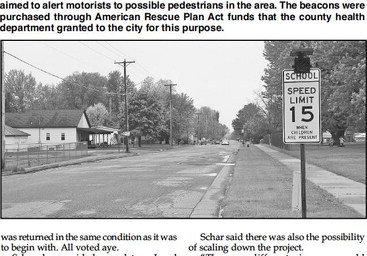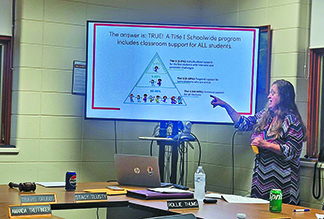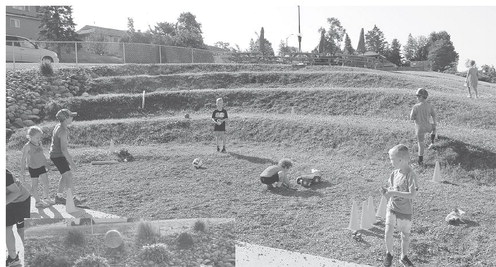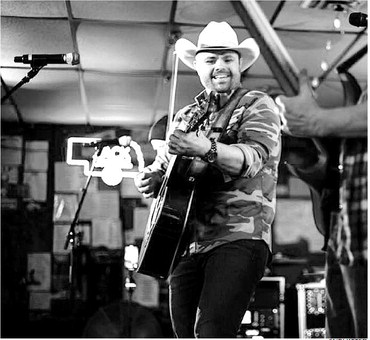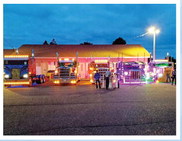Greenwood council,
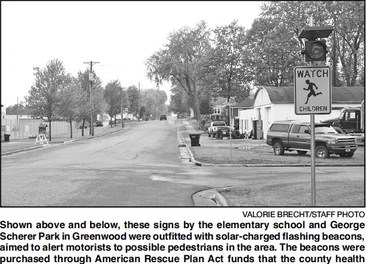

from p. 1 Outdoor projects, updates With the spring weather, favorable for outdoor work, the council also approved several projects around the city to either spruce up or maintain city roads and parks.
The council approved sidewalk repairs in front of Chelsie’s Grill and the post offi ce, and miscellaneous places along Main Street. The city has $10,000 budgeted for that purpose.
Schar provided an update on playground equipment. The city purchased several pieces of equipment, including a handicap swing, two belt swings, a child seat and a handicap-friendly merry-goround for $7,461, and received a Forward Bank grant for that amount. The slide broke, but the city got a $2,000 grant from the Adler-Clark Electric Community Commitment Foundation to take care of that.
Because of receiving those grants, the city still had $15,000 of American Rescue Plan Act (ARPA) funding set aside for the playground. The parks and recreation committee made the recommendation to use that money to move a few pieces of equipment, install turf and add more seating. The tunnel, drums and dinosaur will be moved to the top of the hill.
“Because we’re trying to make it an inclusive playground, to do that you have to have either poured rubber turf or grass… So our thought of the committee was to do the 20-year turf. It allows for lower maintenance and makes it more accessible, and keeps it maintained well,” said Schar.
The committee also recommended purchasing monkey bars and one or two bouncy ride-on toys, and adding a couple more benches to give parents and guardians a place to sit when watching their kids, all within the $15,000 limit. The council unanimously approved spending $15,000 on the parks and recreation committee’s recommendations. Schar planned to order the remaining equipment right away with the hopes of receiving it in a couple of months.
The city approved accepting American Asphalt’s bid for repaving the city streets making up the “school loop,” including Hendren Avenue by the tennis courts, as well as miscellaneous patching as needed, as recommended by the public works committee. It will cost the city $124.35 per ton of asphalt, or a total of roughly $41,905.95. That was approved unanimously.
The city council also approved a 60% down payment to Mark Gardner for the library remodel project, with the other 40% paid upon completion. Council members asked why Gardner was requesting so much of a down payment initially.
“It’s just that he’s a really small contractor and being so small he doesn’t have access to as much funding,” said Schar.
The entire project will cost about $60,000; however, the library was going to pay for $20,000, leaving the city with $40,000 to pay.
“We have the ARPAfunding to pay for it, anyway,” said Mayor Dave Hansen.
The council liked the idea of having the library contribute to the down payment, so it wasn’t just the city responsible. Council member Tracy Nelson made a motion that the city pay half of the 60% down payment, or about $18,000, on the condition that the library agrees to pay the other half. That motion, seconded by Dean Hinker, was approved unanimously.
The council unanimously approved replacing the tires on the city’s 2018 Dodge pickup truck.
Public works director Eddie Herrick gave an update on the West Miller Street project. He said Haas Construction was supposed to come in May 17 to fix the water leak by the apartments. Also, Johnson said he planned to straighten the hydrant by the Suda Storage building. Herrick said he would be doing a final walk-through of the Miller Street project sometime in the next few weeks.
Schar reported that LED flashing beacons had been installed on top of the school sign and the “Watch for Children” sign by the George Scherer Athletic Park. These beacons are programmable, solar charged and were able to be placed on the existing signs. The purpose of the beacons is to draw attention to the sign to alert drivers to slow down, helping to keep children in the schools and community safer.
“We have them programmed to be on before the start of school from 7 to 9 a.m. and again (at the) end of school from 2:30 to 5 p.m. They will also be programmed for other high-traffic times such as softball and kickball tournaments and the Fourth of July,” explained Schar.
The Clark County Health Department provided the city with $10,204.54 for the project, utilizing ARPA grant dollars provided to the health department.
Schar said the city had also received requests for the flashing lights to be put other places where there are a lot of pedestrians, but explained that unfortunately the city did not have the money for that.
“They are too expensive for us to place all over town,” she said.
Future/pending projects Schar also asked for clarification on the easement for the County Highway G bridge replacement project slated for 2025. The city was going to allow the county to use city land on the north side of Highway G and west side of the bridge as a staging area and to store equipment while they were working on the project.
“When I signed the easement, there was a thing stating that we would get $10,000 for it and then there was another part that said ‘donation.’ The county thought we were just going to donate that land because it’s a temporary limited easement, so it’s only for the staging area for the bridge project. I didn’t have that in my minutes. It was not approved to be donated,” said Schar.
She just wanted to know if the city planned to donate the land for use, or if they wanted $10,000 for the easement. The council did not remember discussing a fee for that and were fine with donating use of the land, since it was temporary, anyway. Bolf made a motion, seconded by Nelson, to donate use of the land provided the land was returned in the same condition as it was to begin with. All voted aye.
Schar also provided an update on Local Roads Improvement Program (LRIP) funding for Central Avenue. LRIP is a Wisconsin Department of Transportation grant program. Schar submitted a grant application on behalf of the city requesting the state pay 90% of the project costs; however, the state only agreed to pay 50%. The program operates as a reimbursement, so the city would have to pay 100% up front and the state would reimburse 50%. Schar said the city could not afford to spend that much, so Clark County Highway Commissioner Brian Duell was going to look into other grant options.
Schar said there was also the possibility of scaling down the project.
“There are different pieces we could maybe take out,” she said.
Herrick mentioned that the project includes replacing water and sewer lines in one block, and just the water line in another block. He suggested not doing some or all of that to save money if needed. However, Schar said the city had gotten Safe Drinking Water Loans in the past and could possibly get one again to offset that.
“Water and sewer are the least of our worries; it’s more so the general construction,” she said.
In the end, the discussion circled back to having Duell look into other grant options.
Shown above and below, these signs by the elementary school and George Scherer Park in Greenwood were outfitted with solar-charged flashing beacons, aimed to alert motorists to possible pedestrians in the area. The beacons were purchased through American Rescue Plan Act funds that the county health department granted to the city for this purpose.
VALORIE BRECHT/STAFF PHOTO
